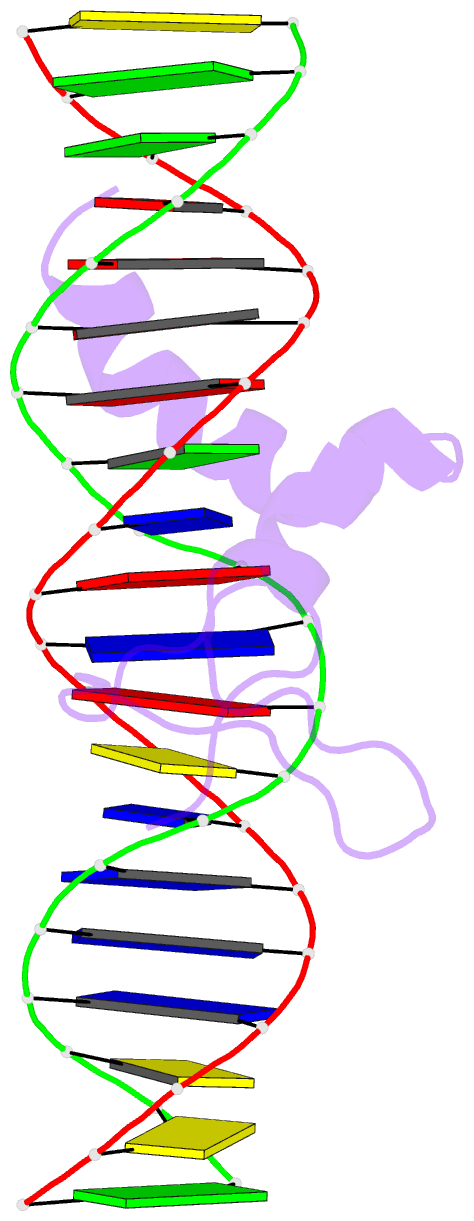Summary information and primary citation
- PDB-id
- 2kae; SNAP-derived features in text and JSON formats;
DNAproDB
- Class
- transcription-DNA
- Method
- NMR
- Summary
- Data-driven model of med1:DNA complex
- Reference
- Lowry JA, Gamsjaeger R, Thong SY, Hung W, Kwan AH, Broitman-Maduro G, Matthews JM, Maduro M, Mackay JP (2009): "Structural Analysis of MED-1 Reveals Unexpected Diversity in the Mechanism of DNA Recognition by GATA-type Zinc Finger Domains." J.Biol.Chem., 284, 5827-5835. doi: 10.1074/jbc.M808712200.
- Abstract
- MED-1 is a member of a group of divergent GATA-type zinc finger proteins recently identified in several species of Caenorhabditis. The med genes are transcriptional regulators that are involved in the specification of the mesoderm and endoderm precursor cells in nematodes. Unlike other GATA-type zinc fingers that recognize the consensus sequence (A/C/T)GATA(A/G), the MED-1 zinc finger (MED1zf) binds the larger and atypical site GTATACT(T/C)(3). We have examined the basis for this unusual DNA specificity using a range of biochemical and biophysical approaches. Most strikingly, we show that although the core of the MED1zf structure is similar to that of GATA-1, the basic tail C-terminal to the zinc finger unexpectedly adopts an alpha-helical structure upon binding DNA. This additional helix appears to contact the major groove of the DNA, making contacts that explain the extended DNA consensus sequence observed for MED1zf. Our data expand the versatility of DNA recognition by GATA-type zinc fingers and perhaps shed new light on the DNA-binding properties of mammalian GATA factors.





